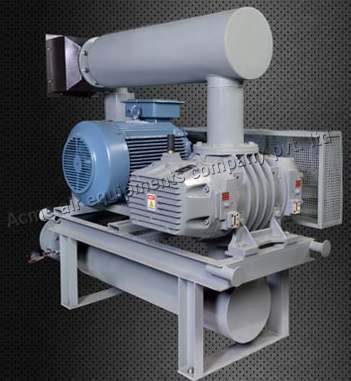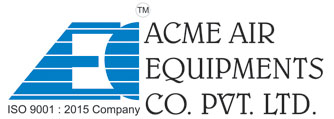Table of Contents
Optimizing airflow in HVAC (Heating, Ventilation, and Air Conditioning) systems is essential for maintaining energy efficiency, improving air quality, and ensuring optimal system performance. One of the key components in achieving efficient airflow is the Twin Lobe Roots Blower. These blowers are widely used in HVAC systems for their ability to deliver consistent air volume at relatively low power consumption, making them ideal for various applications in the industry.
This step-by-step guide will walk you through the process of optimizing airflow with Twin Lobe Roots Blowers in HVAC systems. Whether you’re looking to enhance system performance, reduce energy consumption, or troubleshoot airflow issues, these steps will help you achieve optimal airflow.
Step 1: Understand Your HVAC System’s Airflow Requirements
Before making any adjustments or optimizations to your system, it’s essential to understand the airflow requirements of your HVAC system. Every HVAC system has a specific airflow capacity, typically measured in cubic feet per minute (CFM) or liters per second (L/s).
Key Actions:
- Review the system design specifications for your HVAC setup.
- Identify the required airflow rates for heating, cooling, and ventilation.
- Ensure that the system is designed to accommodate the appropriate air pressure and volume for its intended use.
Having a clear understanding of your system’s airflow needs will help in configuring the Twin Lobe Roots Blower for the right output, minimizing energy waste, and ensuring balanced air distribution across your space.
Step 2: Select the Right Twin Lobe Roots Blower
The efficiency of your HVAC system largely depends on selecting the correct Twin Lobe Roots Blower. These blowers come in various sizes and capacities, and choosing the right model is critical to ensuring the system operates efficiently.
Key Actions:
- Choose a blower that matches the airflow requirements (CFM or L/s) of your HVAC system.
- Consider the pressure and horsepower requirements for your specific HVAC application.
- Make sure the blower can handle the required temperature range without overloading.
You should also take into account factors such as noise level, operating speed, and energy efficiency, as these can affect both the performance and operational costs of the HVAC system.

Step 3: Proper Installation of the Twin Lobe Roots Blower
Correct installation is critical to achieving optimal airflow in your HVAC system. The Twin Lobe Roots Blower should be positioned in a location where it can operate without obstruction and maintain consistent airflow.
Key Actions:
- Ensure proper alignment between the blower and the ductwork to minimize friction and air leakage.
- Verify that the intake and exhaust ports are correctly sized and positioned for optimal airflow.
- Use vibration-dampening mounts to reduce noise and prevent mechanical wear on the blower over time.
- Ensure that the blower’s power supply and control systems are correctly integrated into the overall HVAC system.
Taking the time to install the blower correctly will prevent operational inefficiencies and extend the lifespan of both the blower and the HVAC system.
Step 4: Adjust the Speed and Pressure Settings
One of the main advantages of Twin Lobe Roots Blowers is their ability to operate at variable speeds, which allows for precise control over airflow. To optimize airflow, adjust the blower’s speed and pressure settings based on real-time requirements.
Key Actions:
- Adjust the blower speed using a variable frequency drive (VFD) to match the current demand for heating, cooling, or ventilation.
- Monitor the pressure settings to ensure they remain within the optimal range for your HVAC system’s design.
- Use sensors to monitor air quality and flow, ensuring that adjustments are made based on actual demand rather than fixed schedules.
Adjusting blower speed and pressure ensures that the system operates at maximum efficiency, reducing energy consumption and improving comfort levels.
Step 5: Conduct Regular Maintenance and Cleaning

To ensure that the Twin Lobe Roots Blower operates at peak performance, regular maintenance is crucial. Over time, dirt, dust, and debris can accumulate within the blower and ductwork, reducing airflow and causing inefficiencies.
Key Actions:
- Perform routine inspections and clean the blower’s internal components, such as the lobes, rotor, and bearings, to prevent blockages.
- Check the ducts and vents for any signs of leakage or obstructions that could impede airflow.
- Lubricate moving parts to reduce wear and tear and ensure smooth operation.
Regular maintenance ensures that the Twin Lobe Roots Blower continues to deliver optimal airflow, minimizing downtime and extending the lifespan of the equipment.
Step 6: Optimize Ductwork Design and Layout
The efficiency of your Twin Lobe Roots Blower is closely linked to the design and layout of your HVAC ductwork. Inefficient ducting can create resistance, reducing the blower’s effectiveness and wasting energy.
Key Actions:
- Ensure that ducts are properly sized to accommodate the airflow output from the Twin Lobe Roots Blower.
- Eliminate sharp bends, long stretches, and narrow sections in the ductwork that can cause airflow resistance.
- Use smooth-walled ducts to reduce friction and optimize airflow.
By optimizing the ductwork design, you can significantly reduce energy consumption while improving the airflow efficiency of your HVAC system.
Step 7: Monitor System Performance and Make Adjustments
Once your Twin Lobe Roots Blower is installed and running, it’s important to continuously monitor the system’s performance. Advances in sensor technology and automation have made it easier to track airflow, pressure, and other key parameters.
Key Actions:
- Use flow meters, pressure sensors, and temperature gauges to monitor real-time system performance.
- Integrate a building management system (BMS) or HVAC control system to make automatic adjustments based on the system’s needs.
- Conduct regular airflow audits to ensure the blower is operating at optimal efficiency.
Monitoring system performance helps identify any areas where the system is underperforming and enables you to make data-driven adjustments for further optimization.
Step 8: Implement Energy-Efficient Strategies
One of the primary goals of optimizing airflow is to improve energy efficiency, and Twin Lobe Roots Blowers can play a key role in this. By operating the blower efficiently, you can significantly reduce the energy consumption of your HVAC system.
Key Actions:
- Use energy-efficient models of Twin Lobe Roots Blowers designed to minimize power consumption while delivering high airflow.
- Integrate demand-controlled ventilation (DCV) to adjust the blower speed based on occupancy or air quality levels.
- Ensure that the blower is operating in its optimal efficiency range by adjusting system settings and airflow requirements as needed.
Implementing energy-efficient strategies helps reduce operating costs while maintaining a comfortable indoor environment.
Step 9: Adapt to Seasonal Changes and Load Variations
Airflow requirements in HVAC systems can vary significantly depending on the season or occupancy levels. The Twin Lobe Roots Blower allows for flexibility in adjusting airflow to accommodate these changes.
Key Actions:
- Adjust the blower settings to increase airflow during hot months for cooling or decrease it during colder months for heating.
- Implement zone control to regulate airflow to different areas of a building depending on the load requirements.
- Use timers and sensors to optimize airflow based on peak demand times.
By adapting the blower settings to seasonal and load variations, you can ensure that your HVAC system continues to perform efficiently year-round.
Conclusion
Optimizing airflow with Twin Lobe Roots Blowers in HVAC systems is a critical step in achieving energy efficiency, improving comfort, and maintaining system reliability. By following these step-by-step guidelines-ranging from understanding system requirements to performing regular maintenance-you can ensure that your HVAC system delivers optimal performance. With careful attention to blower selection, installation, maintenance, and monitoring, you can achieve balanced airflow, lower energy consumption, and longer equipment lifespan.
By integrating the Twin Lobe Roots Blower efficiently into your HVAC system, you ensure smooth and cost-effective operation, meeting both environmental and energy-saving goals.
About Author

CEO
Mr. Vishwesh Pardeshi is the CEO of Acme Air Equipments Company Pvt. Ltd., an industrial and engineering goods manufacturing company based in Ahmedabad, Gujarat (India). He has taken over the responsibility from founding Partners and Directors of the Company, and is now leading a talented group of professionals since 2020 by bringing in vast industrial and management expertise. By qualification, he holds a Bachelor Degree in Mechanical Engineering and also holds a MBA degree from reputed institutes. Under his leadership, the Company has successfully executed prestigious projects by delivering high quality and world class products from a state of the art manufacturing facility which combines CNC-enabled precision manufacturing and strong after sales support. In line with the Vision, Mission and Core Values of the Organization, Mr. Vishwesh Pardeshi continues to drive Quality, Reliability and Global Expansion at Acme Air Equipments Co. Pvt. Ltd.








